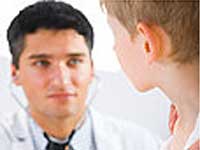Granuloma Inguinale, Chancroid, Nongonococcal Urethritis, Lymphogranuloma Venereum, Molluscum Contagiosum, Pubic Crabs are some of the sexually transmitted diseases that are discussed in this article.
1. Granuloma Inguinale
Granuloma is a sexually transmitted disease caused by bacteria called Calymmatobacterium granulomatis. The bacterium causing the disease thrives in contaminated drinking water and food and passed on through unprotected sex. It is a rare kind of a STD found in the tropical and subtropical areas. It is spread through oral and anal intercourse and also through body contact with the infected sores. Infected pregnant women can pass on the disease to the child at the time of birth.
Symptoms
The main symptom of the disease is the appearance of small red bumps on the penis, vagina, labia and the rectum. They are prone to grow in size gradually and if untreated can cause destruction in the genital tissues or scars on the genitals.
Prevention
Abstinence from sex is the safest way from inviting the disease. But however if a person is sexually active it is very important to use a condom during each sexual intercourse. It is also wise to keep away from having multiple sexual partners and participating in oral sex.
2. Chancroid
Chancroid is a sexually transmitted disease caused by a bacterium named Haemophilus ducreyi. It is transmitted through anal, oral, vaginal sex as well as mutual masturbation.
Symptoms
Appearance of small bumps in the initial stages that progress to pus filled ulcers at the genitals is the symptoms of the disease. They usually appear in clusters and are prone to rupturing allowing blood and pus to ooze resulting in open sores. They appear on the penis, cervix, labia and vagina. They can present themselves on the lymph glands in the genital region causing them to get hard and swollen with pus called buboes that can be extremely painful. If untreated it leads to the possibilities of contracting HIV virus.
Chancroid is a curable disease with oral antibiotics like ciprofloxin, trimetropin and erythromycin.
Prevention
Abstinence from sex is the ideal way from contracting the disease. If one is sexually active it is very essential to use condom during each and every intercourse. It is also very necessary to limit one's sex partners.
3. Nongonococcal Urethritis
The Chlamydia trichomates bacteria cause this disease. It is transmitted through unprotected sex and having multiple sex partners. The infection is spread through vaginal, oral and anal sex and skin-to-skin contact with the mucas membrane of the infected person.
Symptoms
The symptoms of the disease include burning sensation while urinating, itching, irritation and tenderness of the penis, drying of the opening head of the urethra and discharge from the urethra.
It can be treated and cured with oral antibiotics like doxycyclin, erythromycin, azithromycin, ofloxacin etc.
Prevention
Abstinence and safe sex are the only possible measures to keep the disease at bay. Usage of condom during sexual indulgences, refraining from having multiple sexual partners and getting tested regularly for any STDs can safeguard one from contracting the disease. It is also important to avoid sexual contacts when one is infected.
4. Lymphogranuloma Venereum
This is a sexually transmitted disease caused by three strains of the Chlamydia trachomates. It is transmitted through oral, anal, vaginal sex and mutual masturbation.
Symptoms
Symptoms fall into three stages. The initial stage comprises of red painless ulcers in the penis. In the next stage these ulcers disappear. By then the lymph glands will be affected with swelling called buboes that can rupture and discharge pus. It can be extremely painful. Other ailments that accompany the disease are fever, vomiting, joint pain, abdominal or back pain and chills. The third stage involves buboes in the rectum that causes bloody diarrhea, difficulty in passing stools and discharge from the rectum.
The disease can be cured with oral antibiotics like tetracycline, erythromycin and doxycyclin.
Prevention
Prevention measures are the same as in the other STDs like abstaining from sex, using condoms and limiting one's sexual partners.
5. Molluscum Contagiosum
The disease is contagious and is caused by a virus called poxvirus. The disease presents itself as small rashes on the skin and the mucus membrane of eyes, nose, mouth and genitals. The molluscom is painless but however it can be extremely itchy and can be spread to the other parts owing to itching. It is sexually transmitted through unprotected sex, mutual masturbation and sharing of clothing, towels and beddings. They spread through sexual intercourse when indulged in vaginal, oral and anal sex and skin-to-skin contact with the infected person.
Symptoms
The appearance of red flesh coloured rash on certain areas of the body indicate the symptoms of the disease. The rash is of individual lesions called molluscum that makes its presence in the genitals, thighs and lower abdomen.
The disease can normally resolves without treatment. But left untreated it can take more than six months to cure. However in severe cases it can involve permanent scarring. Treatment involves Cryosurgeory, Evisceration and Curettage.
Prevention
Indulgence in protected sex is necessary. It is important to use condoms and sticking on to limited partners if sexually active. Sharing of clothing, beddings and towels should be avoided. A regular testing for STDs is a must.
6. Pubic Crabs
Pubic crabs are lice that are found to infest the hair surrounding the genitals. They can also inhabit the eyebrows, eyelashes, arms, armpits and legs. They are transmitted through sexual intercourse and using an infected person's clothing and towel etc.
Symptoms
Pubic crab is a parasite that lives on human blood. One can confirm the presence of pubic crabs with the bluish spots on the genitals or underwear, which are their feces. The nits of the crabs are found at the lower bottom of the pubic hair. Pubic crabs can be extremely irritating and can cause itching.
They can be treated by a doctor or with special shampoos and lotions sold over the counter. Shampoo can be used for the pubic hair and safe lotions for the eyebrows and eyelids. Care has to be taken to not to allow the lotion to get into the eyes.
Prevention
Abstinence and safe sex are the only ways to keep pubic crabs away. Hygienic habits like avoiding the usage of others clothing and towels have to be advocated. One should avoid indulging with multiple sex partners. Using underwear when trying out lingerie and swimsuit can keep genital lice at bay.
So it is always important to engage in monogamous sex or indulge in safe sex in order to safeguard oneself from sexually transmitted diseases.



 Click it and Unblock the Notifications
Click it and Unblock the Notifications






